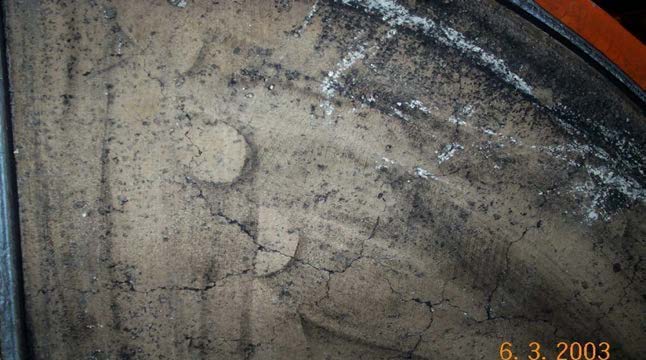Refractory Bricks/Molds and Ash in Boilers
This guidance document is prepared by MnDOT personnel and is intended only for use on MnDOT projects, including partnership projects, and MnDOT Maintenance Operations.
MnDOT has prepared this guidance document to provide its internal procedures and requirements for work performed on MnDOT rights of way, including MnDOT-owned facilities.
This document should not be construed as a full description of all regulations pertaining to the subject matter. Contact the RMU in the MnDOT Office of Environmental Stewardship for additional information or legal requirements.
Refractory Bricks/Molds and Ash in Boilers
Some boilers have refractory brick or mold in the combustion chambers that contain stainless steel fibers and/or asbestos fibers. The fibers are used to hold the brick or mold together under high temperature conditions. Over time the brick/mold breaks down causing the stainless steel or asbestos fibers to be exposed or fall out and become mixed in the ash.
The waste refractory brick/mold and ash may be a hazardous waste due to high concentrations of chromium in the stainless steel. Consequently, these wastes must be treated as hazardous waste unless laboratory analysis demonstrates the wastes as being non-hazardous. These wastes may also contain asbestos and therefore must be treated as an asbestos containing material unless laboratory analysis detects as being non-regulated.


Prior to Removal
Contact RMU personnel to request sampling of the refractory brick/mold and ash prior to commencing any repair work or waste disposal.
Disposal
If refractory brick/mold and ash analysis determine the materials are hazardous for chromium follow containerization, storage, transport, and record keeping for hazardous waste.
If the refractory brick/mold and ash analysis determine the materials contain greater than 1% asbestos, RMU will retain a Minnesota Department of Health licensed asbestos abatement contractor to remove and dispose.
If the refractory brick/mold and ash analysis determine the materials are not regulated for chromium or asbestos, the waste can be disposed of in the trash.
Please contact the Regulated Materials Unit for further assistance.

